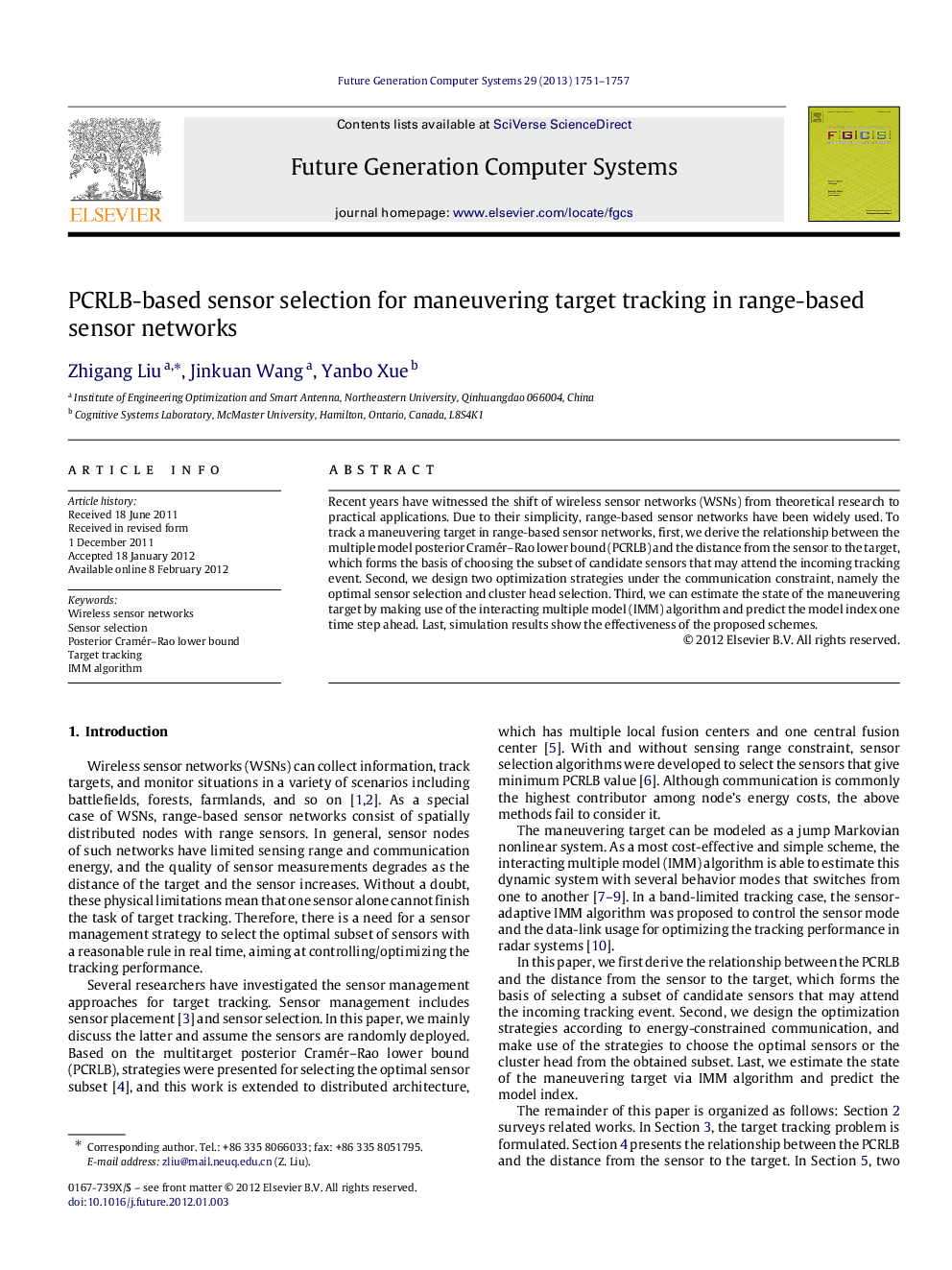| Article ID | Journal | Published Year | Pages | File Type |
|---|---|---|---|---|
| 424660 | Future Generation Computer Systems | 2013 | 7 Pages |
Recent years have witnessed the shift of wireless sensor networks (WSNs) from theoretical research to practical applications. Due to their simplicity, range-based sensor networks have been widely used. To track a maneuvering target in range-based sensor networks, first, we derive the relationship between the multiple model posterior Cramér–Rao lower bound (PCRLB) and the distance from the sensor to the target, which forms the basis of choosing the subset of candidate sensors that may attend the incoming tracking event. Second, we design two optimization strategies under the communication constraint, namely the optimal sensor selection and cluster head selection. Third, we can estimate the state of the maneuvering target by making use of the interacting multiple model (IMM) algorithm and predict the model index one time step ahead. Last, simulation results show the effectiveness of the proposed schemes.
► We derive the relation of the multiple model posterior Cramér–Rao lower bound and the distance. ► We design the optimal sensor selection and cluster head selection. ► We estimate the target’s state using the IMM algorithm and predict the model index.
